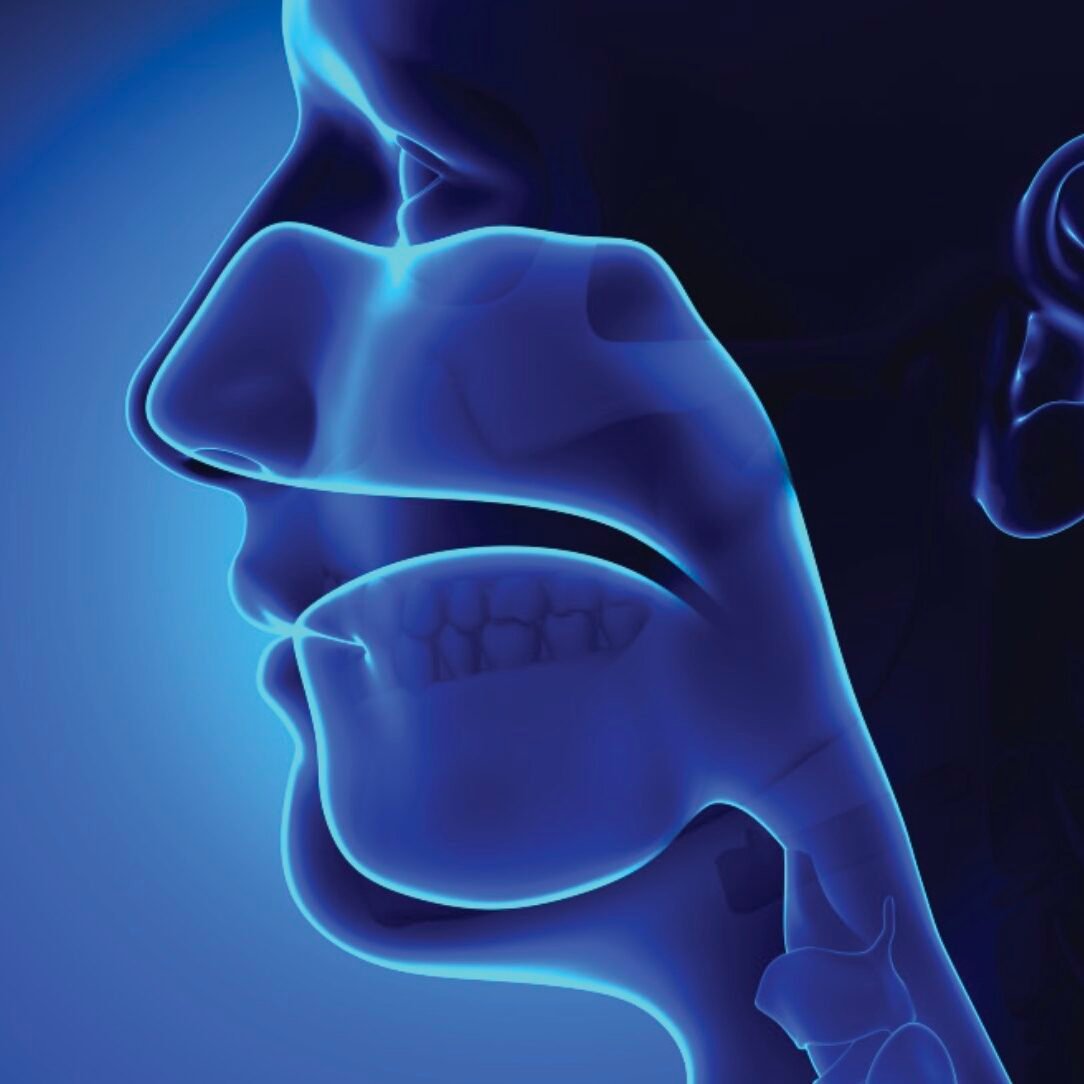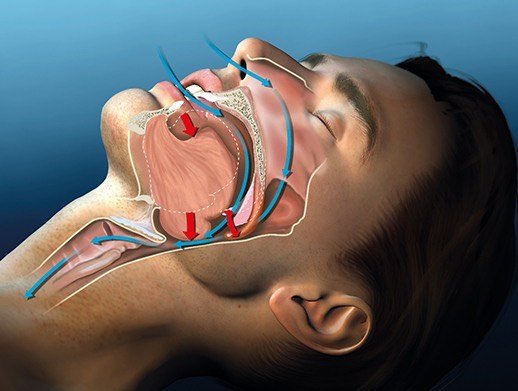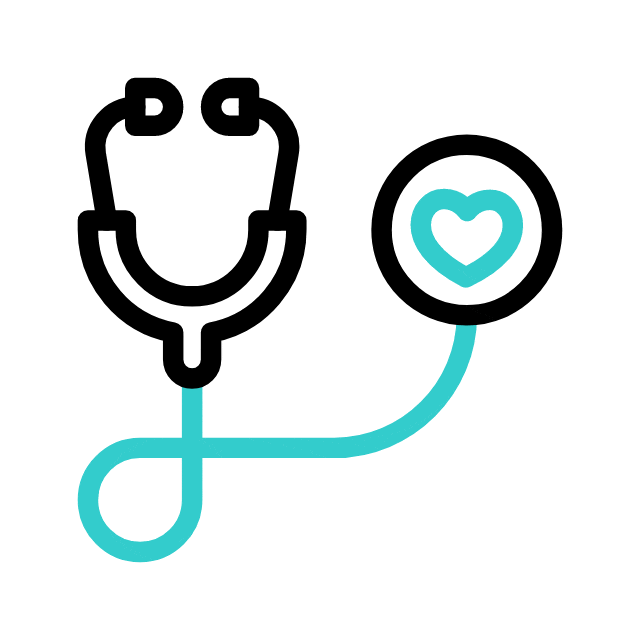Effective OSA Treatment
Physicians
Obstructive Sleep Apnea (OSA) is a widespread but often undiagnosed condition that significantly impacts cardiovascular health, metabolic function, and overall quality of life. As healthcare providers, identifying and treating OSA is critical in reducing the long-term risks associated with untreated sleep-disordered breathing. While CPAP therapy has long been the standard treatment, many patients struggle with compliance, leaving them vulnerable to ongoing health complications.
Traditional treatment with CPAP machines has low patient compliance due to discomfort. This is where DSM-MD’s integrated sleep program provides a game-changing alternative.

Understanding osa
Obstructive Sleep Apnea
Obstructive Sleep Apnea (OSA) is a serious sleep-related breathing disorder that causes partial or complete airway blockages during sleep. These interruptions, known as apneas and hypopneas, last at least 10 seconds and can occur hundreds of times per night. As airflow decreases, oxygen levels drop by as much as 40% in severe cases, triggering brief awakenings that fragment sleep and leave patients feeling exhausted during the day.
Prevalence and Undiagnosed Cases
OSA can affect individuals of any age, but its prevalence rises significantly in middle and older age groups. Studies show that:
- 4% of men and 2% of women experience OSA with daytime sleepiness.
- 24% of men and 9% of women exhibit OSA-related breathing disturbances, even without excessive fatigue.
- 80-90% of adults with OSA remain undiagnosed, increasing their risk for severe health complications.
The Serious Health Effects of OSA
Untreated OSA can lead to life-threatening conditions, including:
- Fluctuating oxygen levels and increased heart rate
- Chronic hypertension and elevated daytime blood pressure
- Increased risk of stroke and cardiovascular disease
- Impaired glucose tolerance and insulin resistance
- Difficulty concentrating, mood changes, and memory issues
- Higher risk of motor vehicle accidents due to excessive daytime sleepiness
- Disrupted sleep patterns that affect both the patient and their bed partner

How Oral Appliance Therapy (OAT) Addresses OSA
OAT offers an effective, non-invasive alternative to CPAP by preventing airway collapse. Unlike CPAP, which forces air through the airway, OAT gently repositions the jaw to maintain an open airway naturally. This approach significantly reduces daytime fatigue, improves cognitive function, and enhances overall quality of life while ensuring better compliance due to comfort and ease of use.
The Role of Mandibular Jaw Position in OSA
Jaw posture plays a critical role in airway stability during sleep. By addressing mandibular positioning, OAT provides a targeted, patient-friendly solution that enhances airway stability and promotes restful sleep. Research shows that:
- Mouth opening increases upper airway collapsibility, worsening OSA symptoms.
- Patients with OSA exhibit greater vertical jaw displacement during sleep compared to healthy individuals.
- Maximal mouth opening can contribute to airway obstruction, particularly under sedation.
- Increased mandibular jaw movement (>0.3 mm) during sleep is a key characteristic of OSA-related respiratory effort.

The solution
Oral Appliance Therapy
Why Oral Appliance Therapy?
Oral Appliance Therapy (OAT) is a non-invasive, cost-effective solution for managing OSA, offering greater comfort and higher patient compliance compared to CPAP. It effectively reduces daytime sleepiness, enhances overall well-being, and improves perceived health status. Additionally, OAT has been shown to boost cognitive function and psychomotor performance, including faster reaction times and reduced fatigue. For patients who struggle with CPAP intolerance, OAT provides a highly effective alternative and can also be used alongside CPAP for enhanced treatment outcomes.
OAT provides the same health benefits as CPAP while offering superior patient compliance.
With an 80% success rate, OAT is a proven solution for mild, moderate, and even severe OSA cases.
All without the common CPAP challenges of:
- Struggling to adjust to mask pressure and discomfort
- Ongoing costs for replacement parts and supplies
- Feeling worse after using CPAP than before treatment
- Persistent daytime fatigue despite CPAP use
How DSM-MD Supports Physicians
Our Approach
Research consistently demonstrates that OAT is an effective and patient-friendly treatment option for OSA. It offers similar health benefits as CPAP, with greater patient compliance and improved quality of life. By incorporating OAT into your practice, you can provide your patients with a comfortable and effective alternative to CPAP, leading to better treatment outcomes and improved sleep health.
At DSM-MD, we partner with physicians to provide a streamlined, patient-friendly solution for OSA management. Our integrated sleep program ensures that patients receive effective, evidence-based treatment while minimizing the administrative burden on your practice. We work closely with you to enhance patient outcomes, improve adherence, and expand access to alternative therapies beyond CPAP.

Seamless Integration
Implementing a sleep program shouldn’t disrupt your workflow. Our team provides end-to-end support, from patient screening to follow-up care, allowing you to offer Oral Appliance Therapy (OAT) with minimal staff involvement.

Revenue Growth
Through our collaborative model, physicians can generate a passive revenue stream without additional overhead.

Patient-Centered Care
We prioritize patient education and engagement, helping individuals understand their treatment options while maximizing their medical benefits. This leads to higher compliance, improved sleep health, and better long-term outcomes.

Compliance & Billing Support
Navigating insurance and billing for sleep medicine can be complex. DSM-MD takes care of the administrative and legal aspects, ensuring smooth reimbursement while keeping your practice compliant with industry standards.
In patients with evaluable data, there was an 80% success rate for treatment of OSA using a custom-fabricated adjustable MAD including substantial numbers of patients with moderate and severe disease.
Research
A randomized controlled trial showed that OAT reduced 24-hour diastolic blood pressure and improved blood pressure during the early morning.
61 patients, randomized, controlled, crossover trial, diagnosed with OSA on polysomnography (AHI ≥ 10 per hour and at least 2 of the following symptoms—daytime sleepiness, snoring, witnessed apneas, fragmented sleep; age > 20 years; and minimum mandibular protrusion of 3 mm). 4 weeks of MAS therapy for OSA resulted in a significant fall in 24-hour DBP attributed mainly to a reduction of approximately 3 mmHg in the early morning period. A similar reduction was also achieved in SBP during the early morning. A partial benefit of MAS on sleep-disordered breathing sustained over a longer period of the night appears to produce a BP-lowering effect similar-lowering to CPAP, which is generally more effective at eliminating OSA but appears to be used for less of the night
Gotsopoulos H, Kelly JJ, Cistulli PA. (2004) Oral appliance therapy reduces blood pressure in
obstructive sleep apnea: a randomized, controlled trial. Department of Respiratory & Sleep Medicine, St
George Hospital, The University of New South Wales, Sydney Australia Sleep. 2004 Aug 1;27(5):934-41.
http://www.ncbi.nlm.nih.gov/pubmed/15453552
A study found that OAT achieved similar improvements in quality of life and daytime sleepiness as CPAP, with greater patient compliance.
Phillips et al. showed that CPAP and MAD achieved similar improvements in EDS and QoL. Average MAD compliance was 6.5 hours/night compared to 5.2 for CPAP (P<0.0001). These results are consistent with other studies, supporting the hypothesis that MAD and CPAP have similar clinical effectiveness due to greater MAD compliance achieving net similar AHI reduction
Phillips CL; Cistulli PA; et al (n.d.). Health outcomes of continuous positive airway pressure
versus oral appliance treatment for obstructive sleep apnea: A randomized controlled trial. American
journal of respiratory and critical care medicine. Retrieved December 21, 2022, from
https://pubmed.ncbi.nlm.nih.gov/23413266/
One study found in significant improvements in cognitive and psychomotor performance in patients with mild to moderate OSA.
Tea et al (2016) demonstrated that Mandibular Advancement Device Therapy resulted in significant improvements in cognitive and psychomotor performance, particularly in the domain of perceptive abilities convergent thinking (constructing and solving simple mathematical tasks) psychomotor reaction times excessive daytime sleepiness quality of life in patients with mild to moderate OSA.
Tea G. et al Improvement of Cognitive and Psychomotor Performance in Patients with Mild to Moderate Obstructive Sleep Apnea Treated with Mandibular Advancement Device: A Prospective 1-Year Study J Clin Sleep Med. 2016 Feb;12(2):177-86. https://www.ncbi.nlm.nih.gov/pubmed/26414974

